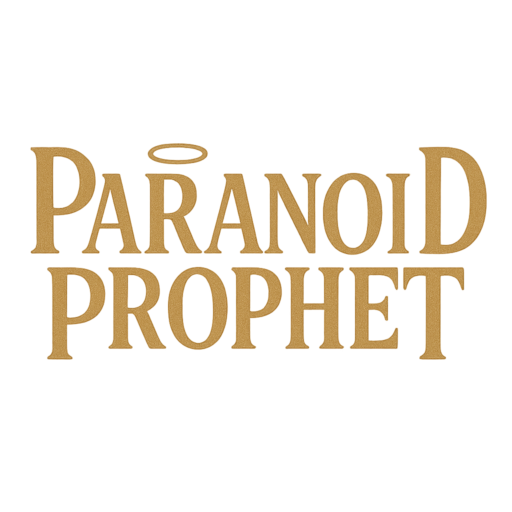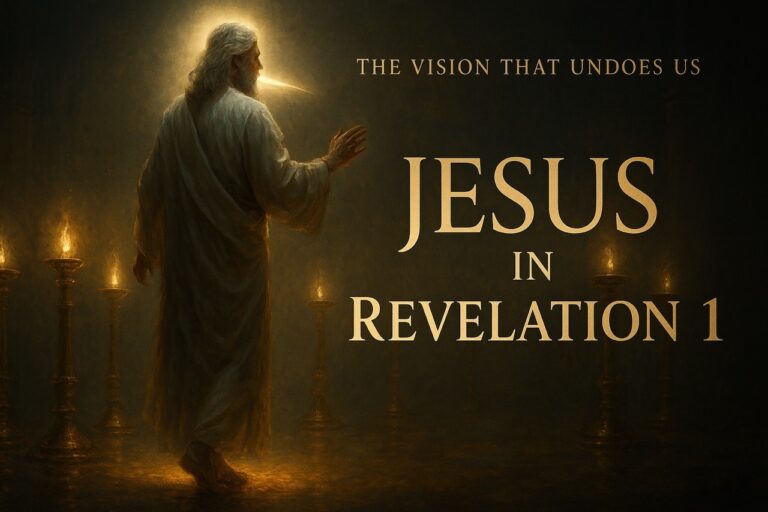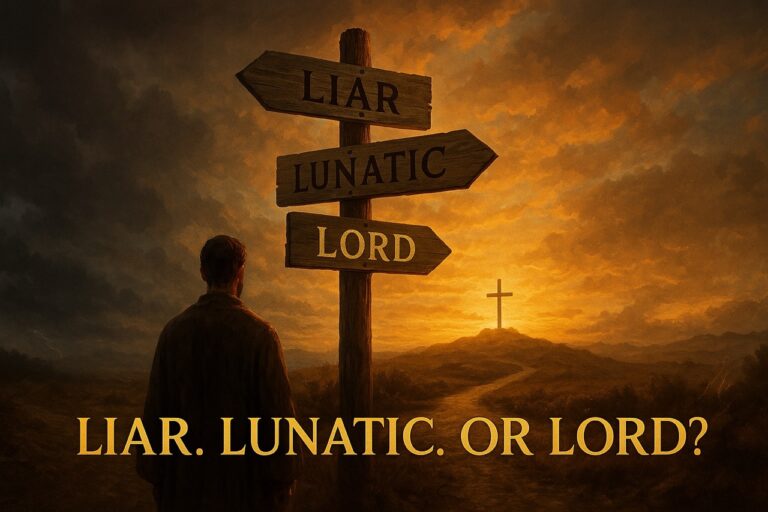Could ancient scripture and cutting-edge science tell the same story in different ways? Many people view the creation days in Genesis as either symbolic or literal, but a fascinating perspective bridges these interpretations with the Big Bang theory. The biblical command, “Let there be light,” might correspond to the universe’s explosive birth. This article explores how time may have flowed differently during the universe’s formation, offering a lens to reconcile science with theology. Through this exploration, we aim to uncover a deeper understanding of Genesis Creation and Time Perception.
A Note on Faith and Science
This article does not attempt to prove or disprove faith through science, nor does it treat scientific theories as equal to divine revelation. Instead, it explores how observations about the universe may harmonize with the theological truths revealed in Genesis, offering a perspective that honors both the authority of Scripture and the wonder of creation.
The Genesis Creation Account: A Foundation for Faith
The book of Genesis opens with an awe-inspiring description of how God shaped the universe. This sacred account outlines the creation process across seven “days,” each marked by a distinct act of divine craftsmanship.
The Days of Creation:
- Day 1: God creates light, separating it from darkness.
- Day 2: The heavens (or “firmament”) are established, dividing the waters.
- Day 3: Land appears, and vegetation emerges from the waters.
- Day 4: The sun, moon, and stars are placed in the sky.
- Day 5: Marine life and birds are created.
- Day 6: Land animals and humanity are formed.
- Day 7: God rests, sanctifying the day as holy.
This sequence portrays a deliberate and purposeful process, emphasizing both divine order and intentionality.
However, it raises an important question:
What do these “days” truly mean?
Are they literal 24-hour periods tied to Earth’s rotation?
Or are they symbolic epochs spanning millions of years?
Could they also serve as a poetic framework designed to convey profound theological truths?
Understanding the Days: Literal vs. Symbolic Interpretations
The interpretation of these “days” has been a topic of rich theological debate for centuries. Notably, the Hebrew word for “day” — yom — carries flexibility depending on its context.
For example:
- In passages like Genesis 1, where “evening and morning” are mentioned, yom often implies a literal 24-hour day.
- However, in Genesis 2:4, the word yom summarizes the entire creation process, suggesting an extended period or even an era.
Thus, the meaning of “day” in Genesis can shift based on literary and theological context.
Understanding these possibilities is crucial for connecting the Genesis Creation and Time Perception discussion to modern scientific models, such as the Big Bang theory and the formation of the universe.
Moreover, recognizing the interpretive richness of Genesis opens the door for believers to marvel at both the literary beauty of the text and its compatibility with scientific wonder.
A Divine Narrative Beyond Chronology
While Genesis provides a clear narrative of what happened during creation, its primary purpose may not be to define exact timeframes. Instead, it highlights the power, order, and intentionality of God’s work.
Thus, the Genesis framework leaves room for rich theological interpretations that can align with scientific insights — enriching rather than undermining the creation account.
By exploring how Genesis Creation and Time Perception intersect, we begin to understand that these “days” may transcend our human experience of time. Rather than fitting neatly into linear chronology, the creation account points to the majesty of a Creator who operates beyond temporal constraints.
Understanding Day (Yom) in Genesis
The Hebrew word for day — yom — carries flexible meaning depending on context.
For example:
- In Genesis 1, the repeated phrase “evening and morning” suggests a sequence of literal days.
- However, in Genesis 2:4, “day” summarizes the entire creation event, implying a broader and more symbolic span of time.
Thus, yom can represent a 24-hour period, an epoch, or even an era, depending on usage.
Many theologians argue that the creation days are not constrained by modern timekeeping. Rather, they serve to convey profound truths about God’s creative power, purpose, and sovereignty.
Ultimately, Genesis invites readers to see beyond human measurements of time and instead marvel at the grandeur of divine action.
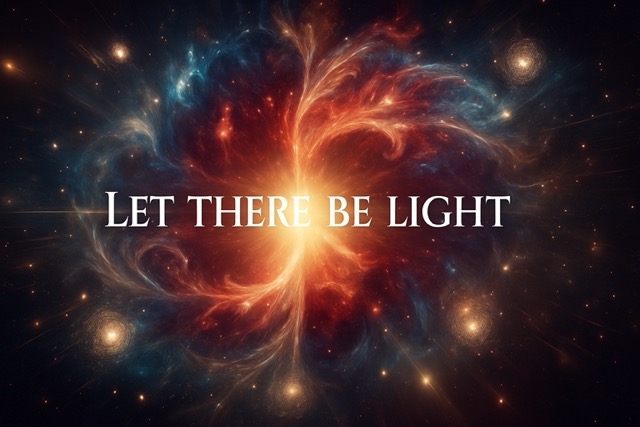
“Let There Be Light” and the Big Bang: A Stunning Parallel
The Big Bang theory stands as the leading scientific explanation for the origin of the universe. According to this model, about 13.8 billion years ago, the universe began as a singularity — a point of infinite density and unimaginable energy. In a single, extraordinary instant, this singularity expanded, unleashing light, energy, space, and time into existence.
One of the earliest and most defining moments of this expansion was the emergence of light itself — a brilliance that still echoes across the cosmos today through the faint glow of the Cosmic Microwave Background radiation.
The Biblical Connection
Scripture declares:
“And God said, ‘Let there be light,’ and there was light.”
(Genesis 1:3)
This iconic verse captures the first recorded act of creation: God calling light into being from the formless void. The parallel between this biblical moment and the Big Bang’s burst of energy is striking.
When interpreted through a theological lens, “Let there be light” could encapsulate the creation of energy, matter, and even the very fabric of reality — all initiated by God’s divine command.
A Unified Perspective
Rather than viewing the Big Bang as a purely secular or random event, believers can recognize it as a possible scientific description of the process that God ordained. Science may describe the “how,” but Scripture reveals the “Who.”
Far from diminishing the richness of Genesis, this perspective amplifies it. It portrays a Creator whose voice set into motion forces that modern science continues to explore, yet still struggles to fully comprehend.
Moreover, the connection between Genesis creation and the observable universe offers a profound invitation: to see faith and science not as enemies, but as complementary ways of marveling at the majesty of God.
As both the Bible and the cosmos proclaim, there is one truth above all:
Light spoke… and life began.
Time Perception During Creation: A Cosmic Puzzle
The Genesis account presents a structured sequence of creation events occurring over seven “days.” However, what if these “days” were not experienced as we understand them today?
To explore this idea, we must first consider the fluid nature of time itself.
Einstein’s Theory of Relativity
Albert Einstein’s theory of general relativity revolutionized our understanding of time. It showed that time is not a fixed constant, but rather a flexible dimension influenced by gravity and motion.
For example:
- Gravitational Time Dilation: Near massive objects like black holes, gravity slows the passage of time compared to areas with weaker gravitational forces.
- Cosmic Inflation and Early Universe Conditions: During the universe’s earliest moments, extreme density and rapid expansion could have drastically altered the flow of time itself.
Thus, these principles suggest that time during the early universe may have behaved fundamentally differently than the time we experience today.
This raises a compelling question:
Could the “seven days” of Genesis reflect a divine perspective of time, unfolding during a period when physical laws operated uniquely?
Moreover, recognizing the dynamic nature of time invites us to approach the Genesis account with humility — realizing that God’s creative work may transcend the boundaries of human chronology.
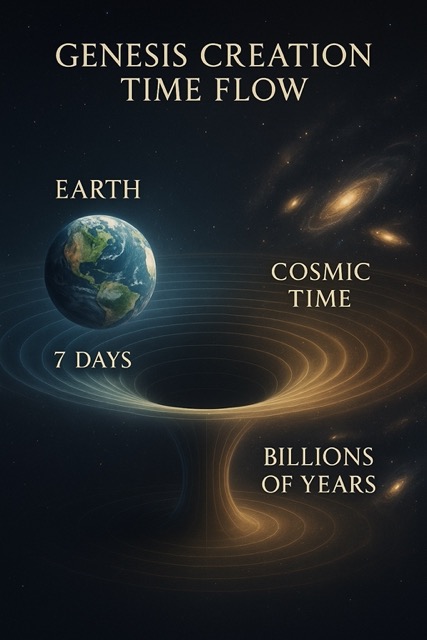
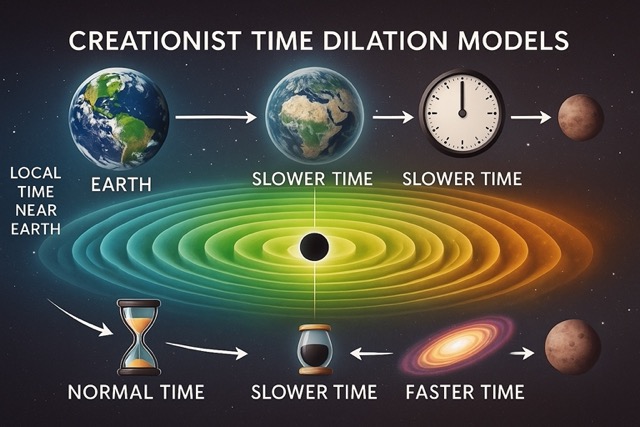
Creationist Time Dilation Models
Physicists like D. Russell Humphreys and John G. Hartnett have explored time dilation as a way to reconcile a literal reading of Genesis with the apparent age of the universe.
Their theories propose two key ideas:
- Local Time Near Earth: Time on or near Earth flowed normally, allowing for seven literal 24-hour days during creation.
- Relativistic Effects Elsewhere: In other parts of the expanding universe, due to intense relativistic conditions, billions of years passed during the same timeframe.
Thus, this approach uses scientific principles to align the biblical narrative with observable phenomena, such as the universe’s vast scale and the starlight from distant galaxies that took billions of years to reach Earth.
Aligning Science and Scripture
These time dilation models demonstrate how Genesis Creation and Time Perception can coexist with modern scientific understanding.
For instance, they provide a framework to explain the apparent tension between a young Earth chronology and an ancient cosmos. By proposing that time itself behaved differently under early cosmic conditions, these models suggest that God’s creative acts unfolded according to divine timing, not human clocks.
Moreover, engaging with these theories reveals that the Genesis account does not stand in conflict with scientific discovery. Rather, it complements it — offering a richer, multidimensional understanding of the universe’s origins.
Ultimately, this perspective invites believers and scientists alike to marvel at the universe’s vast complexity and to stand in awe of the Creator’s profound wisdom and design.
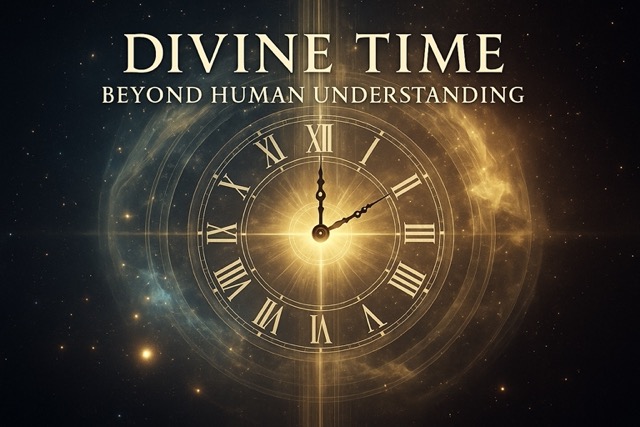
Divine Time: Beyond Human Understanding
One of the Bible’s most profound teachings is that God’s relationship with time differs from ours.
Scripture vividly illustrates this idea:
“For a thousand years in your sight are like a day that has just gone by, or like a watch in the night.”
(Psalm 90:4)
Similarly, the New Testament echoes:
“With the Lord a day is like a thousand years, and a thousand years are like a day.”
(2 Peter 3:8)
Thus, these verses suggest that divine time is not bound by the linear, measurable progression we experience. God, as the Creator of time itself, exists beyond its constraints.
This timeless nature means that what seems like billions of years to humans could be perceived differently by God. Consequently, the Genesis account might reflect a divine perspective on creation rather than a strict, literal chronological sequence.
Implications for Genesis Creation and Time Perception
Understanding divine time offers a profound resolution to the tension between the biblical creation timeline and the vast cosmological timescales observed by scientists.
By acknowledging that God operates outside human temporal frameworks, we gain a deeper lens to view Genesis. The creation narrative becomes a poetic and theological expression of divine order and purpose, perfectly compatible with scientific insights into the universe’s formation.
Scientific Evidence Supporting a Different Time Perception
The Early Universe and Time
The first moments of the universe’s existence were marked by a phenomenon known as cosmic inflation. During this period:
- Space-time itself expanded at an extraordinary rate, faster than the speed of light.
- Extreme density and energy conditions likely altered the nature of time, causing it to flow differently than it does today.
Thus, in this chaotic yet divinely ordered process, time’s passage was intrinsically linked to the rapidly evolving fabric of the cosmos. This supports the idea that the “seven days” of Genesis could reflect a unique temporal experience.
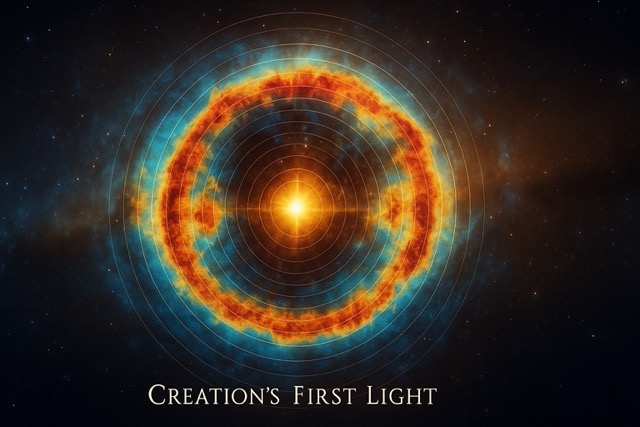
The Cosmic Microwave Background (CMB)
The CMB is the faint glow of radiation left over from the Big Bang, providing a “snapshot” of the universe when it was just 380,000 years old.
Its near-uniformity across vast stretches of space reveals:
- That the universe expanded so rapidly that distant regions could exchange energy and information despite being separated by light-years.
- That time and space behaved in fundamentally different ways during this early phase.
Consequently, the CMB offers compelling evidence that time during creation was not as we experience it today.
Relativity in Action: Time Dilation Observed
Time dilation, predicted by Einstein’s theory of relativity, demonstrates how time behaves differently under various conditions. Remarkably, this concept isn’t merely theoretical — it is observed in real-world phenomena.
For example:
- GPS Satellites: Engineers must adjust for time dilation caused by the satellites’ high speeds and the weaker gravitational field at their altitude compared to Earth’s surface. Without these adjustments, GPS navigation systems would quickly become inaccurate.
- High-Speed Particles: Subatomic particles, like muons created by cosmic rays in Earth’s atmosphere, live much longer when traveling near the speed of light than they would at rest. This demonstrates how time slows for objects moving at extreme velocities.
Thus, these examples show that time’s flow is not universal — it can stretch, compress, or distort under specific conditions.
Consequently, applying this concept to the universe’s creation offers a compelling framework. It helps us understand how the “days” of Genesis might align with the billions of years observed from a human perspective.
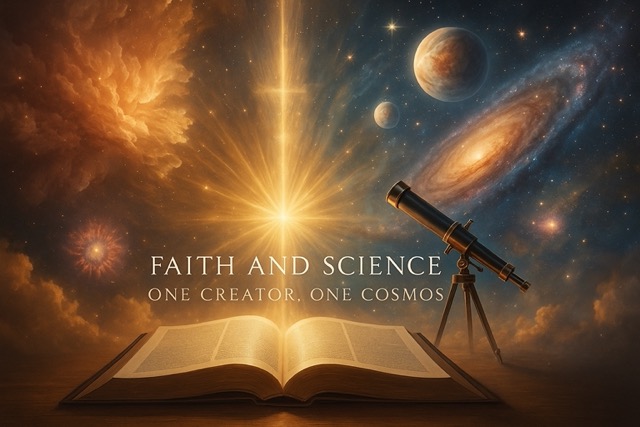
Connecting Faith and Science
Scientific insights into time dilation and the conditions of the early universe beautifully support the theological concept of divine time.
Moreover, by examining both Scripture and scientific discovery, we uncover a shared narrative — one that reveals the incredible complexity and intentionality woven into creation.
Through this lens, the Genesis account and the Big Bang theory are not contradictory.
Instead, they stand as complementary expressions of the same ultimate truth:
God spoke, and the universe responded.
Reconciling Science and Faith: A Unified Perspective
The interplay between science and faith often raises questions about their compatibility — especially when discussing the origins of the universe. However, viewing Genesis through the lens of scientific concepts like time dilation and cosmic inflation offers a profound opportunity.
Rather than standing in conflict, faith and science can be seen as complementary, each enriching the other.
Theological Implications
Interpreting Genesis creation alongside modern cosmology does not diminish its divine inspiration. Instead, it opens new avenues for understanding God’s creative power.
Through this lens:
- Genesis becomes more than a chronological account: It becomes a poetic and theological narrative that communicates divine truths about order, purpose, and intentionality in creation.
- Science becomes a tool to marvel at creation: Discovering how the universe operates allows believers to glimpse the complexity and majesty of God’s handiwork.
Thus, scripture speaks to ultimate truths about God and humanity, while science reveals the mechanisms behind the physical world.
Together, they paint a fuller and richer picture of reality.
Strengthening Faith
For many believers, reconciling Genesis creation with modern science can strengthen faith, not weaken it.
Here’s how:
- Revealing the Intricacy of Creation: Understanding phenomena like cosmic inflation and time dilation highlights the vast intelligence and intentionality behind the universe’s design.
- Removing Apparent Contradictions: A unified view of science and scripture alleviates doubts, offering confidence that faith is not at odds with discovery.
Consequently, embracing the compatibility between Genesis creation and time perception reminds believers that God’s actions transcend human understanding, yet remain accessible through exploration and study.
Encouraging Dialogue
This perspective fosters constructive dialogue between two fields often seen as oppositional.
- Science engages with the physical mechanisms of the universe — such as the Big Bang and time dilation — which can reinforce scriptural themes of creation and divine order.
- Religion provides the philosophical and theological context for understanding purpose, meaning, and destiny — questions science cannot address.
By bringing these perspectives together, we encourage open-minded discussions that reveal deeper truths about humanity’s place in the cosmos.
When faith and science work in harmony, they create opportunities for growth, wonder, and mutual enrichment.
Conclusion: Finding Harmony Between Faith and Science
The connection between Genesis Creation and Time Perception reveals a breathtaking harmony between Scripture and modern cosmology.
Concepts like time dilation, divine time, and cosmic inflation offer a powerful framework for understanding how the “seven days” of Genesis might align with the immense timescales of the universe.
Rather than diminishing the authority of Scripture, scientific discovery can illuminate the profound truths already written into the fabric of creation.
The same God who spoke, “Let there be light,” also wove the laws of physics, time, and space into existence — testifying to both His majesty and His intentionality.
This unified perspective deepens our awe of the Creator, blending the poetic beauty of Genesis with the empirical observations of science.
It reminds us that faith and reason are not enemies, but complementary paths leading us closer to the Author of life.
In both Scripture and in the farthest reaches of the cosmos, we glimpse the same truth:
Light spoke… and life began.
Science measures it.
Scripture reveals its meaning.Both invite us to stand in wonder before the One who holds all time, space, and existence in His hands.
As we continue to explore both God’s Word and God’s world, may we do so with humility, curiosity, and an unwavering faith in the One who created it all — and calls us to know Him through it.
What’s your take on this perspective?
Could the “seven days” of Genesis align with the vast timescales of the Big Bang? Share your thoughts below—we’d love to hear from you!
📚 Related Reading: Time, Creation, and God’s Design
Was Jesus a Madman? Analyzing the Evidence for His Sanity
Explore how Christ’s claims defy linear logic — and how time, prophecy, and fulfillment affirm His divine origin.
Ezekiel’s Wheel & UAPs – Mysterious Movements of God’s Presence
Dive into a fascinating, prophetic mystery that reveals God’s presence in space and motion — echoing the complexity of creation and divine perception.
Eschatological Prophecies of Jesus – His Return, Reign, and the New Creation
From the beginning of time to its end — this article connects Genesis to Revelation, exploring God’s plan through time.
Who Is God? Biblical Attributes Explained
To understand divine time perception, we must first grasp the eternal nature of God Himself — unbound by human timelines.
Proverbs 9:10 – The Fear of the Lord Is the Beginning of Wisdom
True understanding of time, space, and science begins with reverence for the Creator — this Proverb lays the foundation.
External Trusted sources
- “A New Creationist Cosmology: In No Time at All Part 1”
This article discusses a creationist cosmological model that addresses the issue of distant starlight in a young universe, proposing solutions based on time dilation concepts.
Read more - “New Time Dilation Helps Creation Cosmology”
Physicist D. Russell Humphreys introduces a new type of relativistic time dilation, termed ‘achronicity,’ and explores its implications for creationist cosmology, offering potential solutions to the starlight transit time problem.
Read more - “The Big Bang—The Bible Taught It First!”
This article examines the compatibility between the Big Bang theory and the biblical account of creation, arguing that the Bible anticipated key aspects of modern cosmology.
Read more - “Time Dilation Cosmological Models: Exegetical and Theological Considerations”
This paper evaluates creationist cosmological models that incorporate time dilation, analyzing their alignment with biblical texts and theological implications.
Read more - “God and the Big Bang: Past and Modern Debates Between Science and Theology”
Gabriele Gionti discusses the historical and contemporary dialogues between scientific cosmology and theological interpretations, focusing on the Big Bang theory and its theological implications.
Read more
These sources provide diverse perspectives on how the Genesis creation account can be understood in light of modern scientific theories, particularly concerning time perception and cosmology.
FAQ: Genesis Creation and Time Perception
Here’s a comprehensive FAQ section designed for easy reading and SEO optimization. These questions address key themes explored in this article.
1. General Questions About Genesis and Science
What does “Genesis Creation and Time Perception” mean?
It explores how the Genesis creation narrative might align with modern scientific insights — particularly regarding how time was experienced during the formation of the universe.
Is the Genesis creation story literal or symbolic?
Genesis can be interpreted as literal 24-hour days, symbolic epochs spanning ages, or a poetic framework that reveals God’s creative power and order.
How does the Big Bang theory relate to the Genesis creation account?
The Big Bang theory’s “burst of light” aligns remarkably with Genesis 1:3, where God commands, “Let there be light,” suggesting a striking parallel between science and Scripture.
Can science and faith coexist in explaining creation?
Yes. Science describes the mechanisms of creation, while faith reveals the purpose, meaning, and divine orchestration behind it.
What are the implications of reconciling Genesis with modern science?
Reconciling the two enriches our understanding of God’s majesty, strengthens trust in His Word, and fosters meaningful dialogue between science and theology.
2. Biblical Interpretations
What do the “seven days” in Genesis represent?
They may represent literal days, symbolic epochs, or a divine perspective of time beyond human chronological understanding.
Does the Bible explicitly describe the Big Bang?
While the Bible does not name the Big Bang directly, phrases like “Let there be light” resonate powerfully with the scientific description of the universe’s fiery beginning.
How does Psalm 90:4 relate to the Genesis creation timeline?
Psalm 90:4 reminds us that God’s perception of time differs vastly from ours, suggesting that the creation “days” could reflect divine, not human, timescales.
What is “divine time” in relation to Genesis?
Divine time refers to God’s timeless nature — where time is not a constraint, but a created dimension He governs.
Why is Genesis 1:3 significant in understanding creation?
Genesis 1:3 — “Let there be light” — marks the first creative act, symbolizing the emergence of order, energy, and structure within the newly created universe.
3. Scientific Concepts and Their Connection to Genesis
What is time dilation, and how does it relate to Genesis?
Time dilation is the phenomenon where time flows differently under extreme gravity or speed. Thus, it provides a scientific basis for how the “seven days” of Genesis could coexist with billions of years of cosmic history.
How does Einstein’s theory of relativity apply to the Genesis creation timeline?
Relativity demonstrates that time is not constant. This supports the idea that time during the early universe may have flowed differently from today’s experience.
What is cosmic inflation, and why does it matter?
Cosmic inflation describes the rapid expansion of the universe after the Big Bang. It highlights a period when space-time itself behaved in extraordinary ways, possibly affecting how time unfolded during creation.
What is the Cosmic Microwave Background (CMB)?
The CMB is ancient radiation left over from the Big Bang. It acts as a “snapshot” of the universe’s infancy and supports the idea that early time perception was vastly different.
What real-world evidence exists for time dilation?
For example:
- GPS satellites must adjust for time dilation due to speed and gravitational differences.
- High-speed particles, like muons, live longer when traveling at near-light speeds.
Both examples show that time’s flow is flexible, not fixed.
4. Faith and Science in Harmony
Does aligning Genesis with science diminish its spiritual significance?
No. Rather, it enriches Scripture, revealing how science can affirm the magnificence of God’s design.
How does this approach strengthen faith?
By bridging scripture and scientific discovery, believers gain deeper confidence in the intricate intelligence behind God’s creation.
What does this offer to atheists or skeptics?
It provides a logical and invitational framework, showing that faith is not in conflict with observable reality — fostering deeper exploration of truth.
Can this perspective influence how we interpret other biblical stories?
Yes. It invites a broader, richer reading of Scripture — one that emphasizes theological meaning without rigid literalism where it’s not required.
How can science reveal God’s creative power?
Science unveils the mechanisms and beauty woven into the fabric of creation, offering new dimensions to marvel at God’s handiwork.
5. Practical Questions for Readers
How can I learn more about time dilation and biblical creation?
Start with accessible resources like articles on Einstein’s relativity, creationist cosmology models, and studies connecting the Big Bang to Genesis.
What role does theology play in understanding creation?
Theology anchors scientific discoveries within a framework of divine purpose and moral meaning — giving them depth beyond mechanics alone.
Why should Christians study science?
Studying science enhances wonder, deepens gratitude for God’s craftsmanship, and equips believers to engage thoughtfully with the world.
Can this approach influence how we teach Genesis to children?
Absolutely. It provides a balanced way to teach both the theological truths of Genesis and a basic understanding of the universe’s wonder.
What are some recommended readings for further exploration?
Explore books like The Language of God by Francis Collins, works on creation and time by Hugh Ross and D. Russell Humphreys, and accessible articles on cosmic inflation and time dilation.
